14 Brilliant Small Bedroom Ideas for Kids That Actually Work!

Designing a practical and inviting bedroom for your child in a limited space can feel daunting, but don’t let the size constraints hold you back. By embracing clever storage ideas, vertical utilization, and furniture that serves multiple functions, even the smallest rooms can transform into well-organized, cozy sanctuaries. Here are fourteen innovative techniques to help you optimize every inch, ensuring the space adapts as your child grows while keeping clutter under control.
Leveraging Vertical Storage to Expand Room Capacity

In compact kids’ bedrooms, walls become invaluable storage zones. Instead of relying solely on floor furniture, think vertically to free up ground space and create a more open environment.
Installing floor-to-ceiling shelving units or cabinets transforms unused vertical areas into organized compartments for books, toys, clothing, and school materials. Adjustable shelves at different heights accommodate your child’s evolving needs-lower shelves for daily essentials they can reach, and higher ones for seasonal or decorative items.
Integrate functional shelving that doubles as display space, blending practicality with personalization to keep the room tidy yet inviting.
Space-Saving Loft Beds for Multifunctional Use
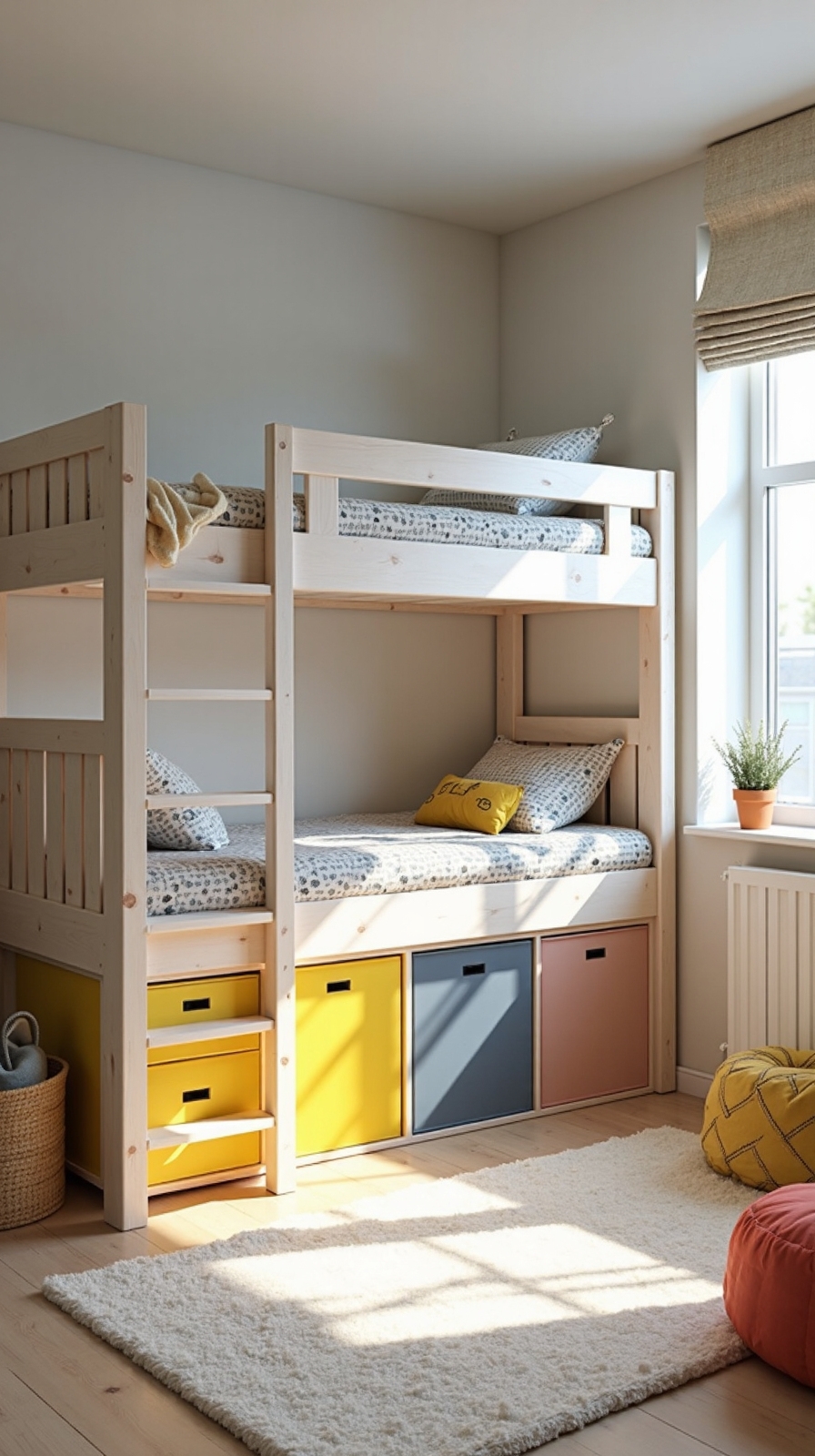
Loft beds are a game-changer in small bedrooms, effectively doubling usable floor space by elevating the sleeping area. The space underneath can be customized into a study corner, play zone, or additional storage.
Opt for adaptable loft bed frames that transition from elevated beds to standard ones as your child matures, ensuring long-term usability. Foldable ladders that tuck away when not in use further enhance floor accessibility.
Underneath, incorporate storage cubes, a comfy chair, or a desk to create distinct activity zones. Employ smart toy storage solutions to keep playthings organized and the room clutter-free.
Optimizing Under-Bed Storage with Containers and Drawers
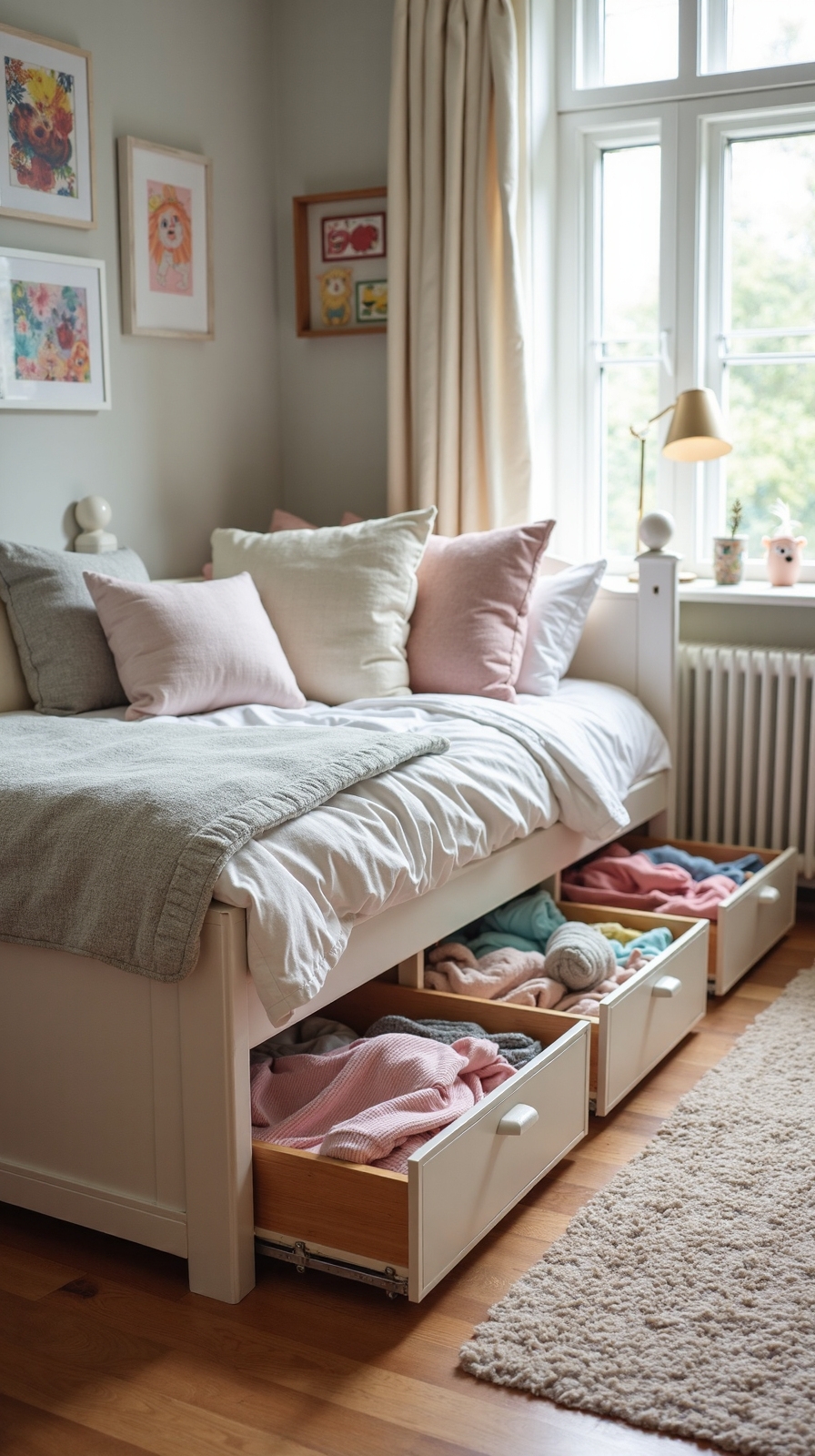
The space beneath your child’s bed is often overlooked but offers excellent storage potential. Use rolling bins or compartmentalized organizers to neatly store toys, clothes, and seasonal gear.
Clear containers allow for quick identification of contents, while labeled boxes encourage your child to maintain order independently. Measure bed clearance carefully to ensure a perfect fit. Some storage bins even double as seating, adding versatility.
Consider clever storage solutions like pull-out drawers with dividers to keep small items such as accessories or collectibles neatly arranged and accessible.
Floating Shelves as an Alternative to Bulky Bookcases

Floating shelves offer a sleek, space-efficient way to store books and display cherished items without occupying valuable floor space like traditional bookcases.
Arrange shelves at varying heights to accommodate different-sized books and decorative pieces. Position them above desks to create an efficient study area without overcrowding the room.
Choose lightweight materials such as pine or engineered wood and securely mount shelves into wall studs for safety. These shelves also serve as display spaces, combining storage with aesthetic appeal.
Embracing Multi-Functional Furniture to Maximize Space

In tight quarters, furniture that serves more than one purpose is essential. Storage ottomans provide seating while concealing toys and books. Modular systems adapt as your child grows, allowing you to rearrange components to suit evolving needs.
Daybeds function as couches during the day and beds at night, while rolling carts can double as nightstands or craft stations. These versatile pieces turn spatial limitations into creative opportunities.
Pair these with effective storage hacks to maintain a clutter-free, functional environment that supports your child’s daily activities.
Designing a Welcoming Reading Nook in Unused Spaces

Unused corners can be transformed into inviting reading nooks that foster your child’s love of books. Place a small comfy chair or floor cushions alongside built-in corner shelves or floating book racks.
Position the nook near windows to take advantage of natural light, and add battery-powered LED strip lights for evening reading without complicated wiring.
Enhance comfort with washable throws and a small side table for drinks or bookmarks. Wall-mounted reading lamps save floor space while providing focused illumination, creating a special retreat that encourages independent reading.
Utilizing Back-of-Door Organizers for Extra Storage
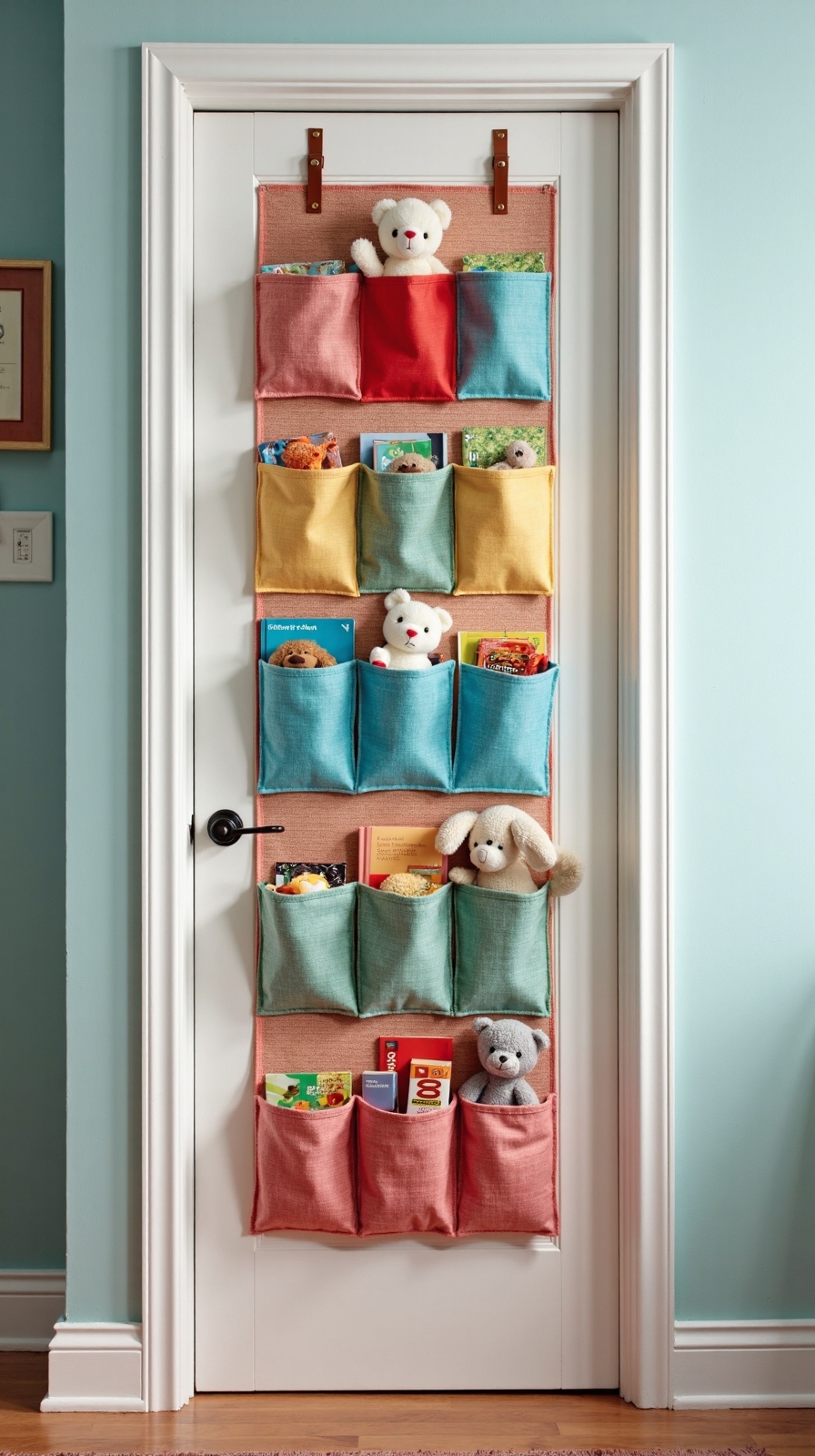
The back of the bedroom door is a prime spot for additional storage that often goes unused. Over-the-door pockets are ideal for shoes, toys, and school supplies without requiring permanent installation.
Choose clear plastic organizers for easy content visibility or colorful fabric options to complement the room’s decor. For a more permanent solution, install hooks, small shelves, or mesh organizers directly on the door.
This strategy maximizes vertical space while keeping essentials within easy reach and maintaining an open room layout.
Using a Light Palette to Enhance Room Spaciousness
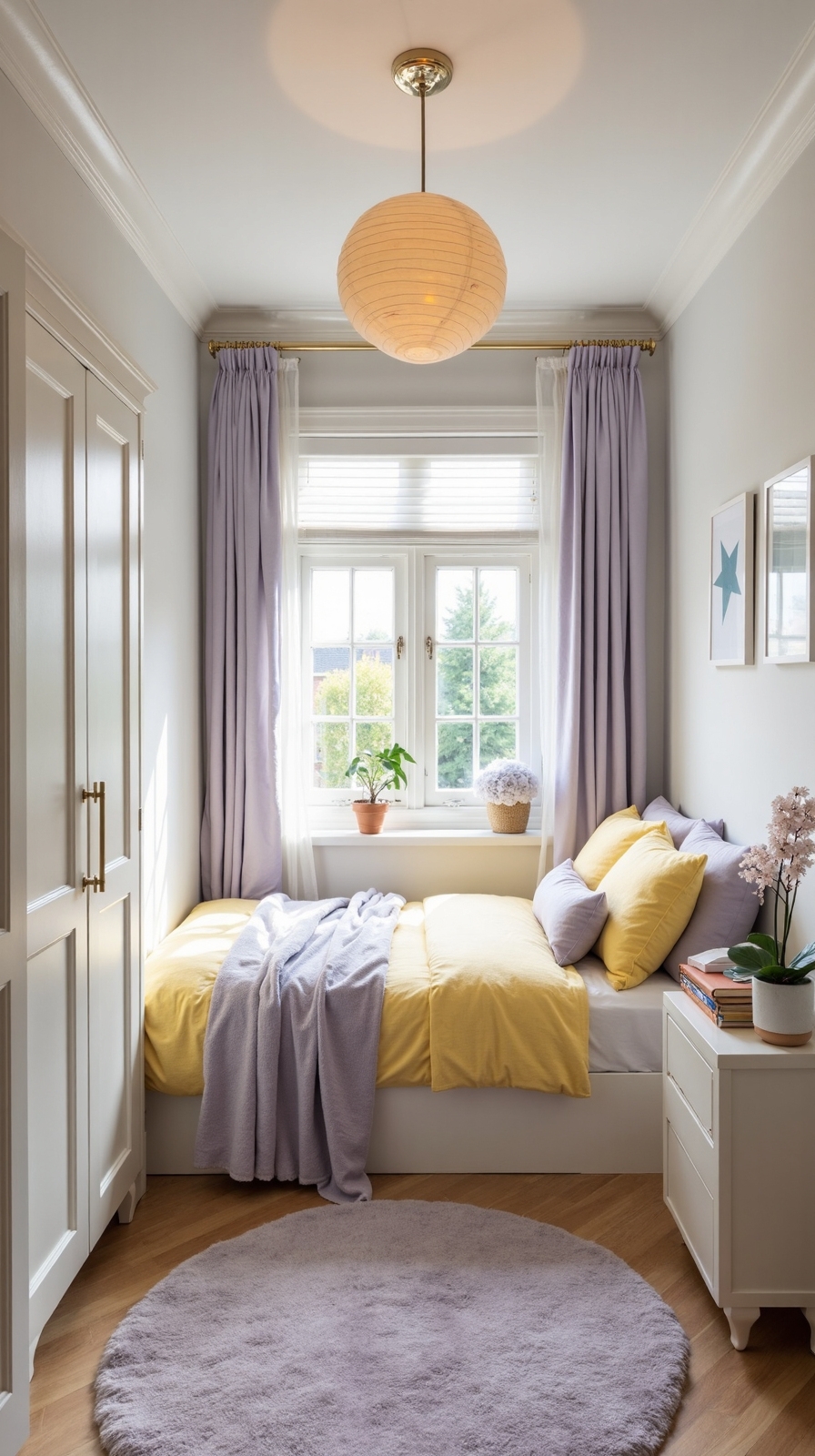
Light hues have a remarkable ability to make small rooms feel larger and more open. Soft pastels like pale blues, mint greens, or creamy whites create a calming atmosphere and visually expand the space.
Enhance this effect with glossy or semi-gloss paint finishes that reflect natural light. Strategically placed mirrors near windows amplify sunlight, adding depth and brightness. Furniture in white or light wood tones complements the airy ambiance.
Painting the ceiling a shade lighter than the walls draws the eye upward, making the room feel taller and more spacious.
Amplifying Light and Depth with Mirrors

Strategically placed mirrors can dramatically brighten a small bedroom and create the illusion of more space. A large mirror opposite a window reflects daylight, illuminating dark corners.
Beyond wall mirrors, consider mirrored closet doors, decorative mirror tiles, or metallic frames to scatter light throughout the room. Position mirrors near lighting fixtures to boost their glow during evening hours, creating a warm and inviting atmosphere.
Smaller mirrors near play or study areas ensure ample illumination for activities while maintaining an open feel.
Integrating Built-In Storage Benches for Seating and Organization
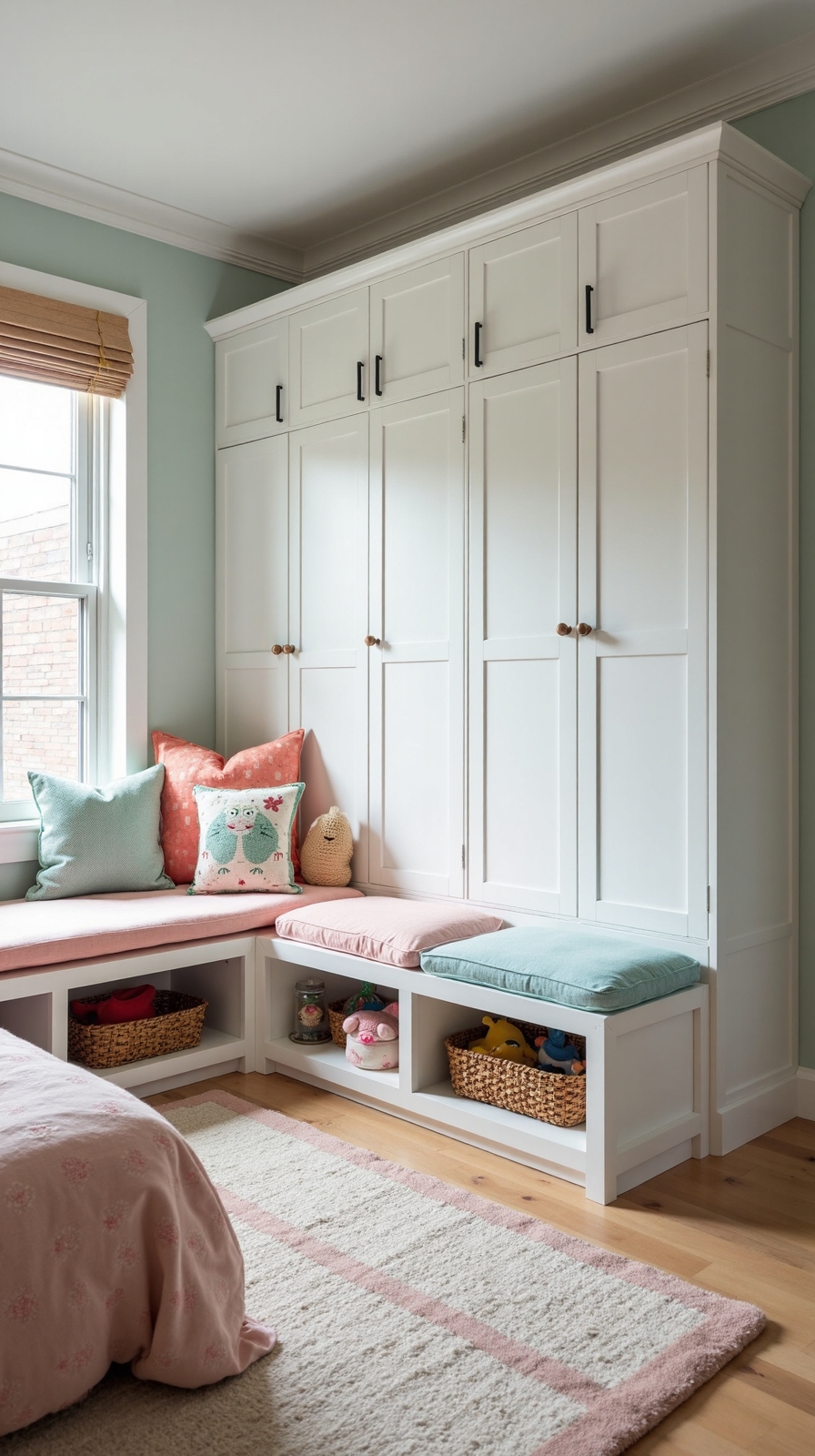
Built-in benches along walls combine seating and storage, making them ideal for small bedrooms. Lift-up seats reveal hidden compartments perfect for toys, clothes, or seasonal items.
Place benches beneath windows to create cozy reading spots or along any free wall space. Add built-in bookshelves above for easy access to favorite books and supplies.
Custom cabinetry tailored to your child’s needs and room dimensions maximizes efficiency. Add colorful cushions and pillows to make the space inviting while eliminating the need for extra chairs.
Choosing Murphy Beds and Storage Daybeds for Flexibility

Murphy beds and daybeds with built-in storage are excellent for reclaiming floor space in tiny bedrooms. Murphy beds fold up into the wall, freeing the room for play or study during the day. Many modern designs include integrated desks or shelving to maximize vertical space.
Storage daybeds serve as seating by day and beds by night, with drawers or lift-up platforms for hidden storage. These pieces keep toys, clothes, and bedding organized while maintaining a clean, spacious look.
Transforming Under-Stair Spaces into Play Areas

Unused spaces beneath stairs can be creatively converted into cozy play zones that don’t encroach on bedroom floor space. Add cushioned seating along angled walls to form a snug reading nook.
Battery-operated LED strip lights provide illumination without complex wiring. Removable storage bins slide under the lowest sections for toys and art supplies, keeping the area tidy.
Bright, cheerful paint colors make the nook inviting and fun, encouraging independent play while freeing up room for essential furniture.
Selecting Compact Folding Desks for Homework and Study

As homework demands increase, a dedicated workspace is vital but shouldn’t crowd a small bedroom. Compact folding desks offer sturdy surfaces that fold flat against the wall when not in use, resembling decorative panels.
Wall-mounted models maximize floor space and often include built-in storage for supplies. Freestanding folding desks can double as nightstands and feature adjustable heights to grow with your child.
These desks ensure study time fits seamlessly into your child’s compact room without sacrificing comfort or organization.
Dividing Small Rooms into Functional Zones with Curtains and Dividers

Segmenting a small bedroom into distinct zones helps organize activities and reduces clutter. Sheer curtains create semi-private areas for sleeping, studying, and playing without blocking light or making the room feel cramped.
Ceiling tracks or tension rods allow easy adjustment of these zones as your child’s needs evolve. Movable room dividers like folding screens, wheeled bookshelves, or fabric panels offer flexible, reconfigurable solutions.
This approach empowers your child to personalize their space, fostering independence and efficient use of limited square footage.
Final Thoughts on Optimizing Small Kids’ Bedrooms
Transforming a small bedroom into a functional, organized, and inviting space doesn’t require expensive renovations. By applying these smart storage and design strategies, you create a room that adapts to your child’s growth and lifestyle.
Start by implementing a few solutions that fit your budget and space, then gradually incorporate more ideas. With thoughtful planning and creative use of space, your child’s compact bedroom can become a cherished retreat that supports their daily activities and nurtures their independence.




